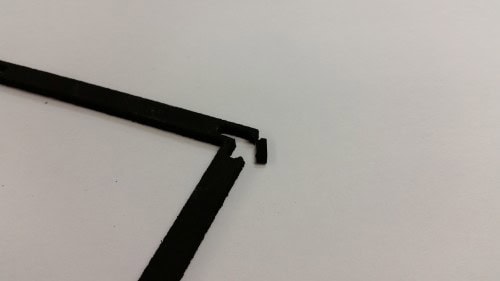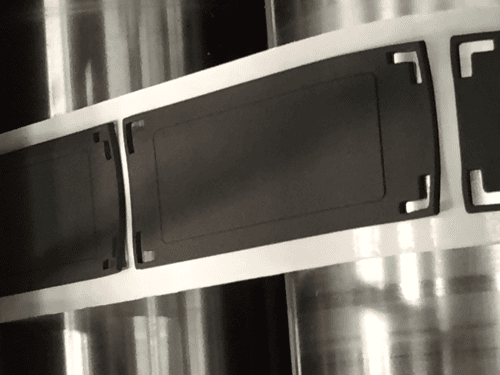One of our larger customers came to us with a new gasket to be cut from thin sponge rubber with adhesive.
This part presented a challenge, since small cutouts were placed extremely close from the edge of the part.
The part was to be cut individually, holes cleared and stacked in a box. In addition, our customer was making the molded plastic part, where the gasket was part of the assembly. The end user designed the part so our customer had no control of the design.

A few things came into play with the design of this part. The cutouts were too close to the edge, preventing us from making a steel rule die to stamp the part. This left CGR to cut on the waterjet. One inherent problem of sponge rubber during the manufacturing process is called a “blowhole,” which is a bubble of air that is trapped inside the rubber as it is cured creating a void.
Another problem of this sponge part was our customer did not want a seam. A seam is where two pieces of sponge rubber are chemically joined.
As we started production the above mentioned problems started to arise. Blowholes at the cutouts created a torn flange. The high pressure of the waterjet could tear the thin flanges just from force alone. Cutting on the waterjet was done in sheets and created a slow process. We were seeing a high rejection rate.
The Solution
CGR’s Product Development team went into action. Our first task was to redesign the part. We came up with several design changes that would alleviate the problems. We supplied samples of the new designs. Our customer came back with a very simple answer of “we need what is on the print.”

After that our next step was a material change. CGR sampled several materials that were more stable for the small flanges. Again our customer came back with a very simple answer of “we need what is on the print” At this point, we were not sure if our customer was even communicating the changes with the end user.
CGR was determined to find a solution. Our final step was to explore a processing change.
Since we knew the gasket was part of the assembly our customer was currently making, the way we packaged them should be no concern of the end user. We asked our customer if we could supply these kiss cut on a roll, to which they agreed.
With that information we proceeded to have a custom two-level rotary die made. This would supply the part the end user designed. This would allow us to kiss cut to the adhesive liner and cut through all the slugs. Several special parts were added to our rotary machine.
Our manufacturing process totally changed as a result. We now laminate the psa to the sponge with seams. Our laminators inspect for blow holes while running. We then slit the material to a specific width, and then final step is cutting Rotary. During the cutting process the part is kiss cut, slugs blown out, matrix around the part removed, and any part with a seam removed.
Today, this part still runs with the same die with the same process. Since then we have explored more opportunities using complex machined rotary dies. Just recently we had the most complex die made yet. Cutting a very complex pattern into a thin gauge non-woven and removing all the waste.
CGR is able to work with engineers on these types of designs. We can advise of problems and obstacles that can arise, right from the beginning of the project. Contact us today to learn how we can improve your next project.
